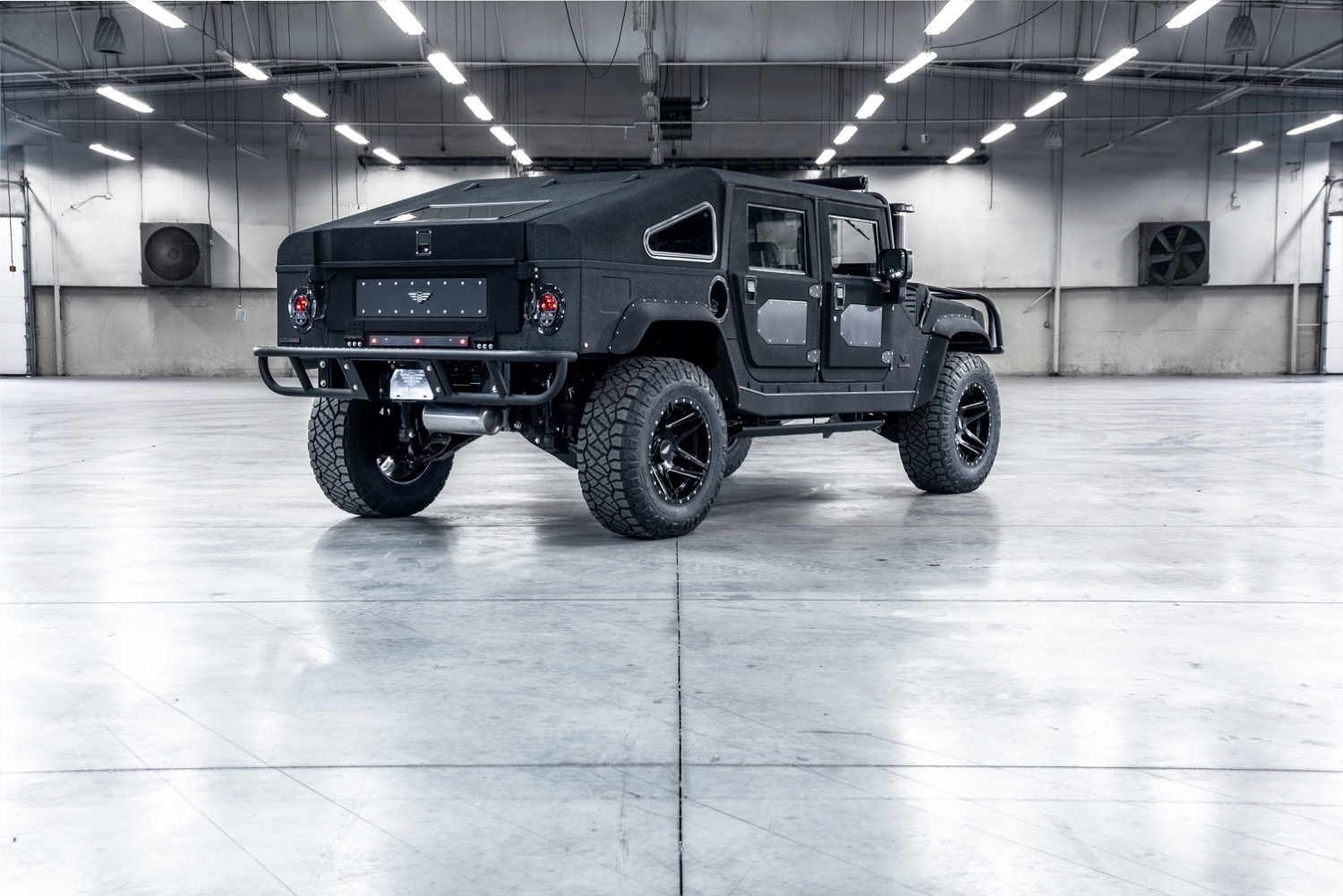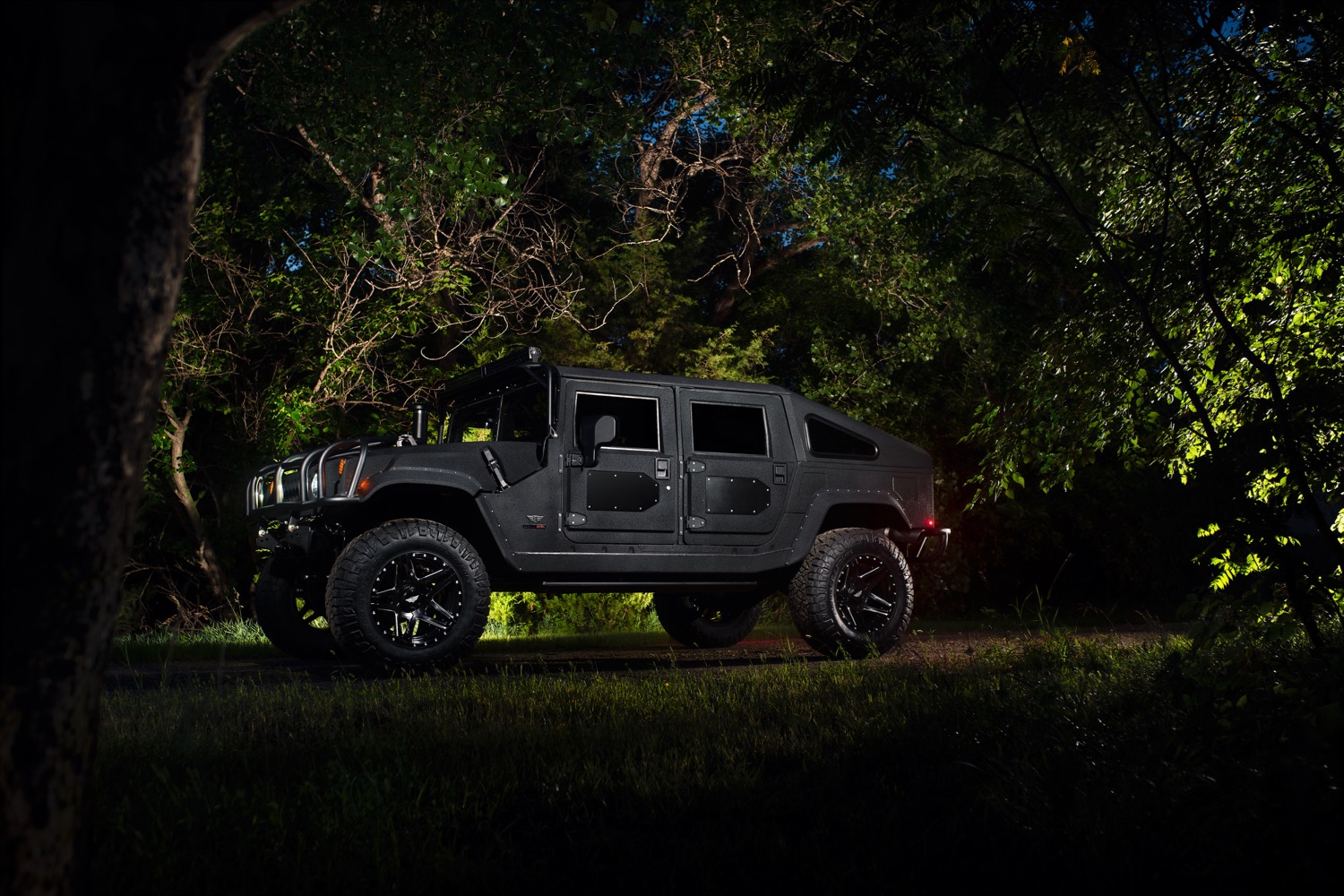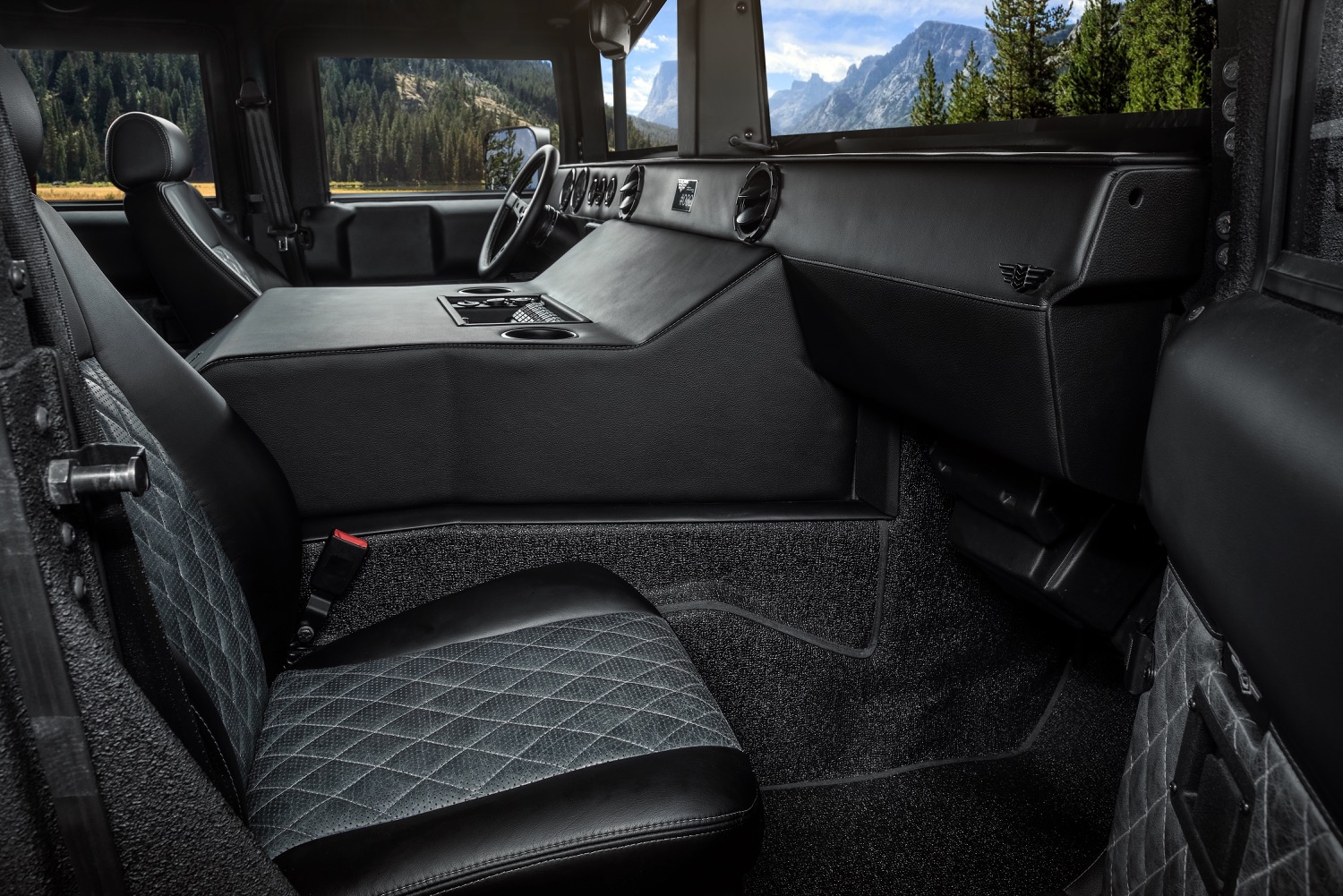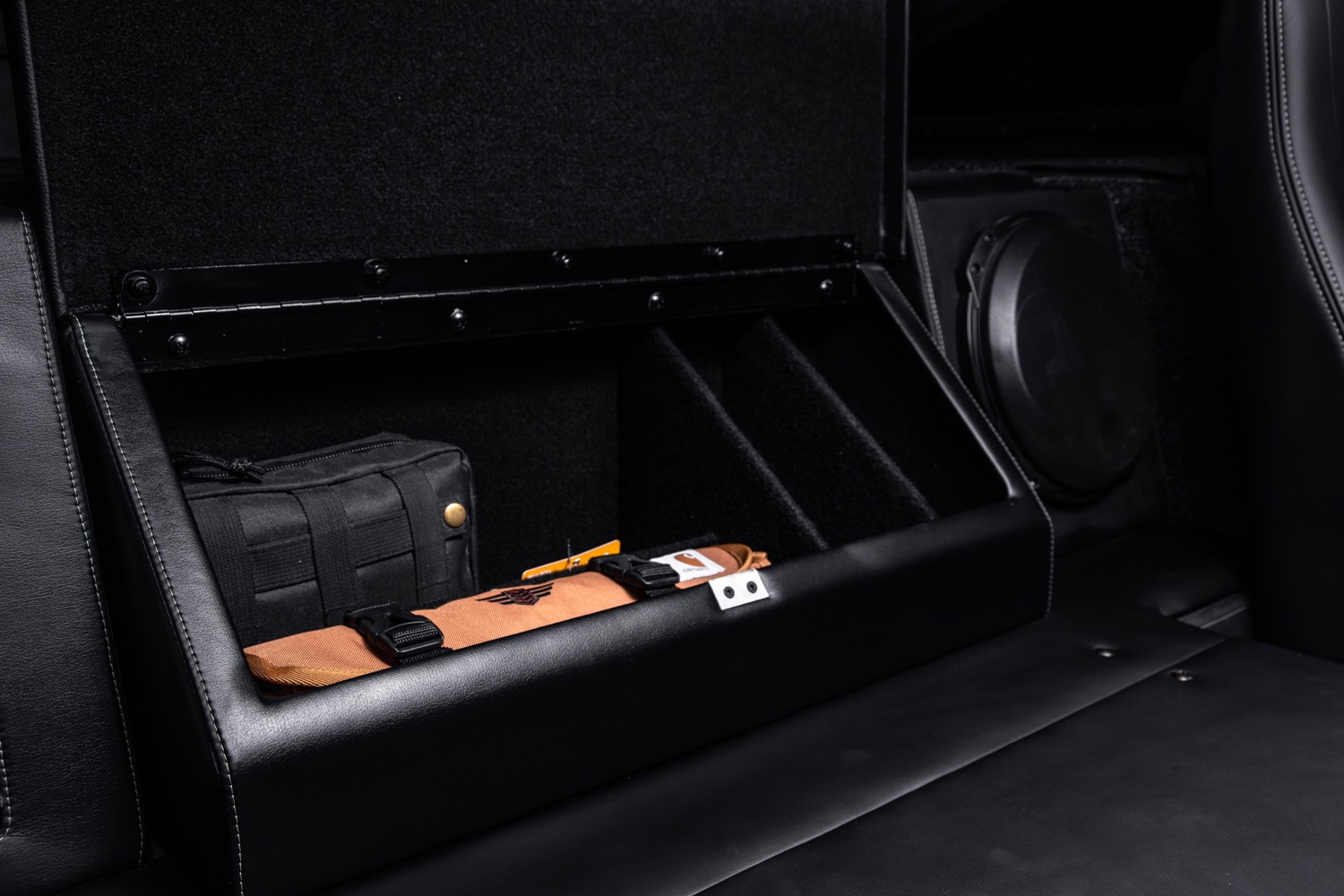Several companies are now upgrading older cars with modern tech, and now Detroit-based Mil-Spec Automotive is applying that formula to the Hummer H1. The company unveiled its first vehicle, Launch Edition #001, in May. That truck was built to demonstrate what the company can do; now Mil-Spec is rolling out its first customer vehicle, #002.
As if the H1 wasn’t wide enough, Mil-Spec widened by the body by 7.0 inches, and increased track width by 8.0 inches. Some of that extra width is due to 3.5-inch fender flares, which cover 20.0-inch wheels shod in Nitto Ridge Grappler tires. The Hummer also features a snorkel, overhead light bar, and a brush guard worthy of Mad Max. Mil-Spec also offers a 12,000-pound Warn winch, but this customer didn’t tick that particular option box.
While the Hummer looks meaner on the outside, it’s more comfortable on the inside. Even civilian versions of this military vehicle never offered much luxury in stock form, but Mil-Spec added extra sound deadening and a leather-lined interior to this truck. The buyer also specified air-suspended front seats with heating, cooling, and even a massage function.
This particular Hummer also features an air-suspension system, which should offer a more comfortable ride on pavement. Mil-Spec said it won’t compromise the H1’s legendary off-road capability, either. On-road ride quality is fine, but off-road capability is what made the H1 so cool in the first place. Derived from AM General’s HMMWV military vehicle, aka Humvee, the H1 was produced as a civilian vehicle from 1992 to 2006 in cooperation with General Motors. AM General continued manufacturing military versions for several years after that.
Mil-Spec uses a modified version of the stock GM Duramax 6.6-liter turbodiesel V8, tuned to produce 500 horsepower and 1,000 pound-feet of torque. That may seem like a lot of power but, with an estimated curb weight of over 7,000 pounds, this is a very heavy vehicle. Mil-Spec quotes a top speed of 96 mph.
Mil-Spec Hummer H1 rebuilds start at around $219,000, but optional features like the air-suspension system bump up the price of this vehicle to $290,837. The finished product is a lot nicer than a stock H1, but it’s also a lot more expensive. If you really want to throw Lamborghini money at an old off-roader, East Coast Defender will also spruce up a Land Rover for a similar price.












